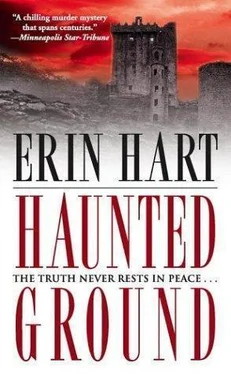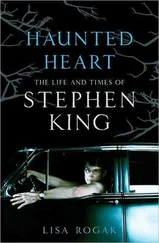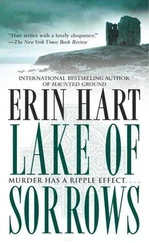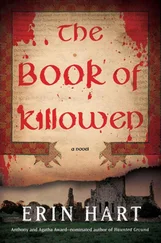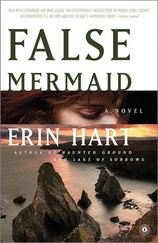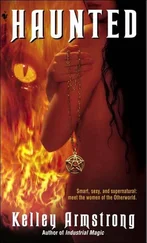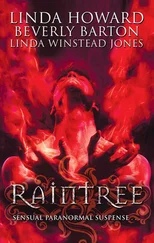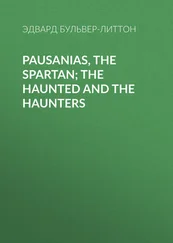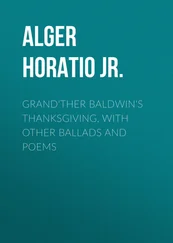Peadar—a technician in the archaeology department at University College Dublin, where Cormac was on the faculty—was a normally languid young man, whose concave frame and large hands invariably put Cormac in mind of a stick figure from an ancient cave painting. The cause of Peadar’s agitation was soon clear: some farmers cutting turf had discovered a body yesterday in a raised bog near Lough Derg in the southeast corner of County Galway, about two and a half hours west of Dublin.
Although hundreds of bog bodies had turned up in central Europe, mostly in Germany and Denmark, they were somewhat of a rarity in Ireland. Fewer than fifty such discoveries had been made in Irish bogs, and they offered an unparalleled opportunity to gaze directly into the past. Peat bogs not only preserved skin, hair, and vital organs, but even subtle facial expressions, and often revealed what a person who drew his dying breath twenty centuries ago had taken for his last meal on earth. Modern turf-cutting methods often damaged bog bodies. If this was a complete specimen, it would be the first in nearly twenty-five years, since the ancient remains of a woman had been discovered at Meenybraddan in Donegal. This body had been found by a man cutting turf by hand, so there was a good chance that it was intact.
With Peadar’s voice seeping into his ear, Cormac crossed to the desk to put on his glasses and culled from the flow of words the few that were pertinent to the matter at hand. “Has Drummond been there?” he asked. Malachy Drummond, the chief state pathologist, visited the scene of any suspicious death, to decide whether it should be classified as a police matter. Drummond had been to the site this morning, Peadar said, and upon examination of the remains had declared it a case for the archaeologists rather than the police. The National Museum had jurisdiction over all such bog remains, but as it happened, Peadar explained, their entire conservation staff had just left for a conference in Belgium and would be away for the next four days, so the museum’s keeper of conservation had phoned from Brussels to see whether Cormac would be available to do the excavation.
“He said he realized you were on leave, but that he’d consider it a personal favor.”
“Phone back, would you, Peadar, and tell him I’m on my way.”
Cormac paused to clear his throat before he broached the next subject. “I presume somebody’s informed Dr. Gavin.” Nora Gavin was a lecturer in anatomy at Trinity College Medical School, an American with a particular interest in bog bodies—and as it turned out, the one person Cormac felt disinclined to have working beside him, though he didn’t see how it could be avoided. It would be easier if he didn’t have to phone her himself.
“She’s already been notified. Says she’ll meet you there,” Peadar said.
Twenty minutes later, Cormac was on the road. What would they find at the bog? Given the natural preservatives in peat, it was difficult to tell at first how long someone had been buried in it—he remembered an account of English workmen uncovering the remains of a middle-aged female in a fen during the 1950s, spurring a tearful confession from a local man who told police he’d killed his wife and dumped her body in the marsh. Later—shortly after the remorseful husband hanged himself in his prison cell—the corpse in question turned out to be a woman who died sometime in the late Iron Age. The remains of the missing wife never turned up.
Cormac felt a growing excitement as he considered the possible significance of this new find. It had been ten years or so since he himself had been involved in an excavation of bog remains; he and a colleague had uncovered a fully articulated hand and arm at a bog road site in Offaly. He remembered studying the grooved and brown-stained fingernails, in particular. It was curious how arbitrary preservation in bog environments could be; sometimes bones were completely decalcified, but the skin, hair, and internal organs were intact. A well-preserved ancient body could often be found alongside completely skeletized remains in what one would quite naturally presume were the same conditions.
Cormac was dressed for the field, in jeans, a dark cotton pullover, and a bright blue anorak; he had tossed his waterproofs and wellingtons in the back of the jeep. As he drove through the confusion of suburban developments that had begun sprouting along the major roads out of the city, past the point where the built-up areas began to give way to the expansive pastures of prosperous farms and the tree-lined edges of stone-walled estates, he looked forward to escaping the din of Dublin. This journey would take him west across the great shallow basin of low bogland and pasture that formed the Midlands, and to the lip of the Shannon estuary, the place he always considered the most significant border on this little island. The larger world invariably imagined Ireland divided into north and south, but for him a greater division had always existed between east and west, especially between the lush, fertile planters’ dominion around Dublin that early English settlers had dubbed “the Pale” and the stony, wind-beaten west, where the last vestiges of Gaelic Ireland had long since been quite literally banished. You could still hear the echo of an ancient culture in the traditional music, of course, but it was also in the way people spoke, in their manner, in the very pace of their lives, which seemed to slow perceptibly the farther west he traveled. This drive always seemed to take him backward in time.
The trip would take at least two and a half hours, so Cormac fished with one hand in the glove box and brought out a tape of Jack Dolan, a flute player of the old puff-and-blow Leitrim style. Beside him on the passenger seat was his wooden flute case—East Galway was an area fairly saturated with flute players, and you never knew when a bit of music might turn up. Alongside the instrument case was Cormac’s site kit, which he carried in his father’s old medical bag. The small gilt “J.M.” on its worn leather surface reminded him that he was also heading back into his own past, to a place only an hour’s drive from where he had grown up, on the west coast of Clare. He should, he knew, make a trip to the church in Kilgarvan where his mother was buried. He berated himself for harboring such ambivalence about her. There was nothing to be done now, except to try to understand her better in death than he had in life. He’d visit her grave—if he had a chance.
Cormac disliked driving the motorways. When he wasn’t in a hurry, he savored crawling along the secondary routes. Today there was a reason for haste: once removed from its sterile environment, a bog body was susceptible to dehydration and rapid decomposition. The usual procedure was to excavate around and then cut away the entire section of turf containing the body, continuing to use the peat in its preservative capacity even after the remains reached the lab at Collins Barracks in Dublin. Conservation methods used on bog bodies so far—tanning, freeze-drying—had yet to prove successful over the long term. Bacteria and mold still set in too easily. The current approach was to pack remains in wet peat, then in several layers of black plastic sheeting, and keep them refrigerated indefinitely at 4 degrees Celsius. The National Museum recently had a room-sized unit built specially for the purpose. Not ideal, certainly, but the best current option.
Cormac began sorting out the details of the excavation. If one cubic meter of waterlogged peat weighed a ton, what type of crate would have to be built to contain two cubic meters? And how long would it take to excavate the whole area by hand? But beneath the ticking metronome of these conscious thoughts was a hidden melody, aroused by a chance connection to a human being whose life and death were about to intersect with his own. He wondered for the first time whether this new bog body was man or woman. It mattered little to his work whether the person was male or female, ancient or modern, but each individual found in the bog—and indeed any human remains—had a unique story to tell. The question was always how well you could decipher the story from what was left behind.
Читать дальше
